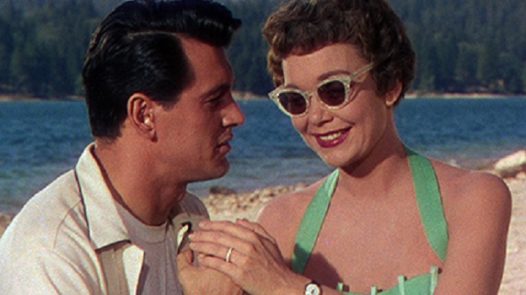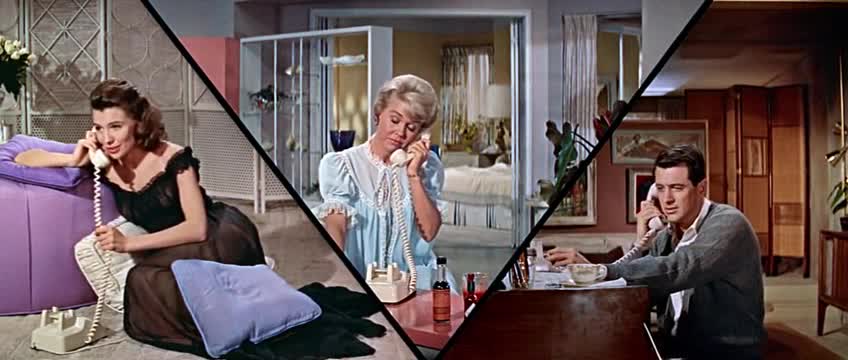
“The way life looks in my pictures is the way I want life to be. I don’t hold up a mirror to life as it is. I just want to show the part that is attractive.”
–Ross Hunter on his approach to film production.
When audiences saw “A Ross Hunter Production” flash across their movie screens during the technicolor-saturated and CinemaScoped decades of the 1950s and 60s, they knew that they were going to see one of the most lavishly costumed and luxuriously produced vehicles ever to come out of Hollywood.
The man behind these fabulous cinema confections began his life on May 6, 1926 in Cleveland, Ohio with the much less polished name of Martin Fuss. Fuss began his professional life as a drama teacher at Glenville and then Rawlings High Schools. Martin must have telegraphed his need to be in the limelight to his students because they sent their teacher’s picture to Paramount studios. Unfortunately, the studio took a pass on the young teacher’s acting talents, but the handsome Fuss soon found himself under contract to Columbia where his name was promptly changed to the more euphonious Ross Hunter. A meteoric rise to stardom didn’t happen after Hunter appeared in nine mostly forgettable “B” pictures at the studio. A viewing of some of Hunter’s films reveals an earnest, but rather lackluster screen presence.
Realizing that his future was probably behind the camera instead of in front of it, Ross enrolled in film production classes. With his experience in stage production, Hunter was hired as a producer at Universal Studios to helm The Flame of Araby (1951) starring Maureen O’Hara and studio heart throb Jeff Chandler. While he may have been new to film production, Ross understood every movie mogul’s need to make a fine film while bringing it in under budget. Hunter cut over $170,000 from the Flame of Araby budget. This would prove an unbeatable formula for the producer over the next twenty-years.
Unlike other major studios in town, Universal never developed a large “stable” of stars for its productions. This meant they had to “borrow” stars on “loan out”from other studios or hire actors who were free agents. This is where the “Universal Type” came into play. These actresses were just past their “sell by date,” but still lovely and could be a box office draw in the right vehicle. Hunter had a genius for matching these aging goddesses with the right part.
The first of these pictures was Magnificent Obsession (1954), starring the studio’s resident hunk Rock Hudson, and the perfect “Universal Type” Jane Wyman. This sudsy melodrama of hidden identities, blindness, medical miracles and incredible sacrifice was a huge hit. Obsession was the first of a long string of tear-jerking pot boilers (many directed by Douglas Sirk) and light comedies for the producer and his life/production partner Jaques Mapes.

Obsession was followed by such box office giants as All That Heaven Allows (1955), Tammy and the Bachelor (1957), Imitation of Life (1959), Pillow Talk (1959), Midnight Lace (1960), Backstreet (1961), Madam X (1966) and Airport (1970).
Many of these films not only helped revive the careers of some of the silver screen’s most important leading ladies (including Lana Turner, Doris Day, Barbara Stanwyck and Susan Hayward), but made money for Universal hand-over-fist. The primary reason for this was that Hunter was able to make his films look expensive without breaking the studio bank. Another reason was Mapes’ clever set decoration. As might be imagined, most Ross Hunter productions were audience favorites but didn’t receive many critical plaudits. All of this changed when his 1970 production of Alex Hailey’s Airport received a Best Picture nomination.

After Hunter’s Lost Horizon (1973) tanked at the box office, the producer turned to television and received an Emmy nomination for his production of another Arthur Hailey novel, The Money Changers (1977). Shortly after this, Hunter produced his final project, the television movie titled The Best Place to Be (1979).
Ross Hunter succumbed to cancer in 1996. He lived with Jaques Mapes for forty years, and the two reportedly had one of the happiest marriages in Hollywood.